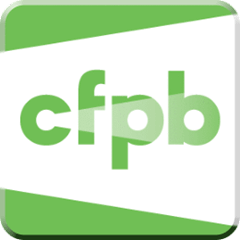Meeting Today's CFPB Initiatives with CLARIFIRE®
Be prepared for operational and regulatory disruption, position your financial organization to innovate and implement, while managing change with CLARIFIRE® Technology.
The post-financial crisis world continues to present challenges as the mortgage industry moves from chaos to calm to disruption. Diligently working under the regulatory oppression mandated by the Dodd-Frank Wall Street Reform and Consumer Protection Act, lenders and servicers have implemented innumerable operational changes that have impacted credit parameters, key documents, regulatory compliance, and endless associated rules. Under today's challenges, the industry is now faced with unraveling much of the work that has consumed manpower and technical development for over a decade.
As your financial institution strives to stay abreast of continued disruption, you'll need a thorough chain of communication and events, documented adherence to today's rules versus yesterday's requirements, as well as robust workflow with smart automation. CLARIFIRE® provides automated workflow that bridges process gaps and adds flexibility and oversight, helping lenders and servicers transcend the challenge of disruption. CLARIFIRE® features workflow with dynamic pathing that meets or exceeds operational and regulatory requirements through configurable business rules managed by the business.

Solving for Changing CFPB Requirements
The examples provided are representative of changes included in recent rulemaking. This information is not intended to be a full and complete depiction of the rule but rather to exemplify highlighted areas and the benefit of workflow when addressing the addition, modification, and/or deletion of agency rules.
The Evolution of the ATR/QM Rule and the GSE Patch
The Dodd-Frank Act was signed into legislation on July 21, 2010. Despite meeting extensive industry scrutiny at the onset, the parameters of the Dodd-Frank Act, including the Ability-to-Repay and Qualified Mortgage (ATR-QM) rule, helped to stabilize our economy in the wake of the Great Recession.
The ATR/QM rule has seen considerable development over time, for better or worse. The original rule was created on April 30, 2013, and was finalized for mortgage applications beginning January 10, 2014. It has been clarified and amended on numerous occasions through rulemakings issued by the Consumer Financial Protection Bureau (CFPB), from look back timeframes to point and fee caps to exemption status changes. The rule saw its first revision on September 21, 2015, then most recently on October 20, 2020, and so it has continued leading up to the most current two rules published by the CFPB on December 29, 2020. Striving to stay in front of industry concerns tied to the expiration of the "GSE Patch" on July 1st of this year, these two CFPB final rules went into effect on March 1, 2021:
- The Amended General QM Rule eliminates the GSE QM category and modifies general QM qualification requirements. Most notably is the monthly debt to income (DTI) ratio cap of 43 percent, which has been replaced by a price-based QM definition. Whereby the annual percentage rate (APR) must exceed a comparable average prime offer rate (APOR) minus 2.25 percentage points, as established on the date that the corresponding loan's interest rate is set. Further threshold requirements are defined for Safe Harbor exemption and subordinate-liens.
- The Seasoned QM Rule introduces a new qualified mortgage category for first-lien, fixed-rate mortgages that meet 36-month seasoning and performance requirements. These loans must be held in portfolio and meet further product features, points and fees criteria, and underwriting requirements.
No doubt the ATR/QM rule is here to stay in one form or another. It has proven to provide a fundamental backdrop for ensuring lenders make a "reasonable and good faith determination" of a borrower's ability to repay their mortgage loan, as well as placing restrictions on loan parameters in order to prevent the origination of loans that create undue risk to the consumer. As with any regulation, the difficult task is keeping up with the parallel and overlapping requirements that define our industry.
Click here to view additional details on today's version of the ATR/QM Rule.
Learn More
CLARIFIRE® is a leader in robust and modern workflow automation. With accessibility to quality, critical, and relevant data through flexible workflows and dynamic KPIS, CLARIFIRE® exceeds the demands of customers with complex servicing business rules, risk management, governance, and visibility needs. Available via SaaS subscription delivery, CLARIFIRE® technology makes CFPB's changing metrics and deadlines attainable. Schedule a CLARIFIRE® Demo today.